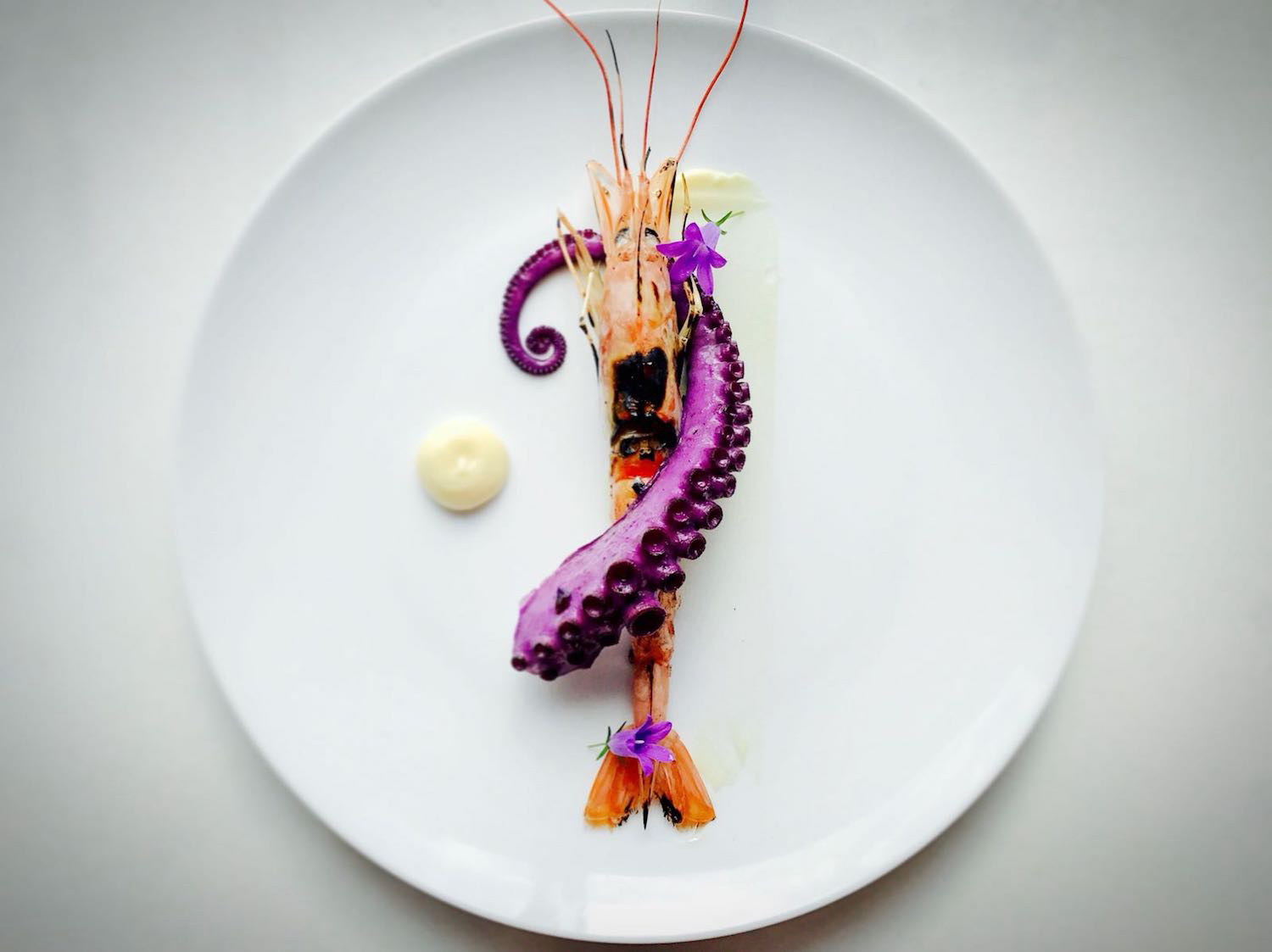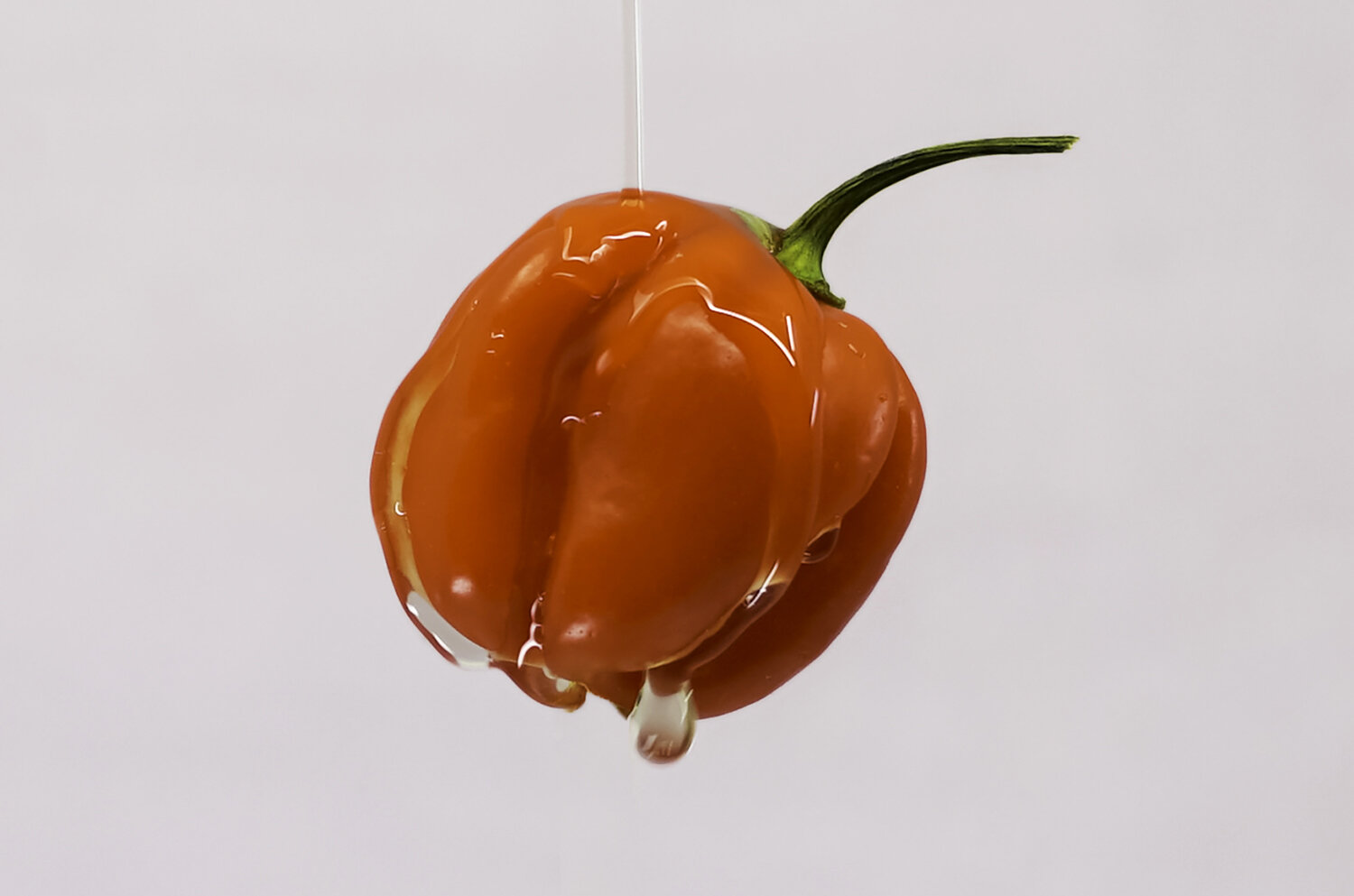The Anatomy of Heat

The fiery chili pepper delivers more than just heat, as scientists are now beginning to prove.
If you describe chili peppers on a spectrum of mild, medium and hot, you’re only describing one aspect of the potent power of peppers – and even then, you’re only partly right. Scientists are slowly revealing the true power of the pepper and its effects, which may have far-reaching consequences.
Twenty-two heat compounds exist in the world of chili peppers – and each compound creates different bodily sensations and activates different pain receptors, according to Ivette Guzman, a professor of horticulture at New Mexico State University who conducted a study of chili peppers along with Paul Bosland. Through their research, they discovered that the way our senses experience chili peppers plays a role in how cultures identify with foods – in a way, peppers go beyond our taste buds.
“Capsaicinoids, they're like essential oils,” said Dr. Guzman, who uses the term capsaicinoids to refer to all capsaicin-like compounds. In 2017, she and Dr. Bosland published a paper about the sensory properties of chili peppers. “They also might be giving some aroma, which is going to impact your olfactory nerves. So, it's more than just heat.”
The heat-producing compounds in chilies bind to various receptors in the mouth and stimulate nerves that create a reaction unique to that pepper.
“Some of these capsaicinoids, they're kind of bitter,” said Dr. Guzman. “So, they might bind to other receptors that can sense bitterness. Some could actually be more flowery.”
The scientists mapped out how peppers’ heat developed, the duration of the heat, where the pain was located in the mouth, and its feeling and intensity. If you’re eating a habanero, you would experience delayed heat that hits the back of the throat and then lingers.
Alternatively, the Scoville rating, which measures only the amount of capsaicin in a pepper, ranks a habanero’s heat between 100,000 to 350,000 units. Translation? The pepper is really hot but not super-hot.
The Scoville rating is “like a two-dimensional image of heat,” Dr. Guzman said. “Whereas looking at all of these other compounds can give you a three- or four-dimensional perception of it.”
West Indian peppers, like the Trinidadian scorpion, are among the hottest peppers on the Scoville scale, which may turn off (or entice) people as they consider trying them.
A habanero pepper registers between 100,000 and 350,000 on the Scoville scale. Ivette Guzman, a scientist in New Mexico, believes that having a more dynamic rating for peppers would increase the general understanding of what peppers have to offer in terms of flavor, aroma and heat. PHOTOGRAPHY BY ISLAND AND SPICE MAGAZINE
“There are 22 naturally occurring capsaicinoids that can cause the heat sensation when consumed,”
But what if the description was more nuanced?
“Caribbean peppers are actually the most amazing,” Dr. Guzman said, “When it comes to flavor and heat, they're so deep and rich with flavor and some of this flavor comes from these unique capsaicinoids.”
This is where those pain receptors Dr. Guzman described come into play on the plate. “It is critical to use the correct chili pepper” she stated in the study where she looked at chili peppers used on spicy soba noodles and other cultural dishes. Each pepper offers a unique experience.
The Scotch bonnet in Jamaican jerk seasonings, the scorpion peppers in Trinidadian hot sauce and the ají caballero for Puerto Rican pique, another type of hot sauce – each is an example of a pepper becoming ingrained into a culture’s cuisine.
Maricel E. Presilla, a culinary historian who grew up eating spicy ají guaguaos in Cuba, described peppers as “the great staple food of the New World, from the Caribbean and Mesoamerica to the Andes,” in her book, “Peppers of the Americas.”
You cannot remove those little peppers from the cuisine of the Dominican Republic or from Puerto Rico, said Ms. Presilla, “it’s a mark of identity.”
Her book includes a recipe for the mojito de ají guaguao, an indigenous hot sauce in Cuba. The guaguao peppers are blanched, stem removed, sliced, bruised and then steeped in vinegar. The mixture is bottled with crushed garlic, salt, sugar, oil and water. Then it sits for a couple of weeks on a shelf before being placed on a dining table as an everyday condiment.
“Caribbean peppers are actually the most amazing, I think, when it comes to flavor and heat,”
Another recipe calls for a helping of the deep red Guatemalan chili Cobán. The ground peppers and cacao nibs get tossed on a salad of ripe pineapples, green mangoes and watermelon. The fruits are bathed in lime juice and spritzed with sugar and salt before being served upright like breadsticks.
“People don’t just use them for heat, they use them for color and texture,” Ms. Presilla said.
Of course, there’s still the question of why the peppers are so hot in the first place. Douglas Levey, a zoologist and evolutionary ecologist, explained in a paper he published in 2008 that peppers create heat as a means of survival. The capsaicin deters predators from eating it. Peppers also create high amounts of capsaicin to ward off environmental stress and disease.
More recent studies may be getting close to understanding how this mechanism affects the human body, as well.
Eating chili peppers at least four times a week reduced mortality risks, according to a 2019 study in Italy that looked at 22,811 residents over an eight-year period.
“We believe capsaicin has a role,” said Marialaura Bonaccio, who headed the study. “Chilies have a lot of phytochemicals, carotenoids, flavonoids, antioxidants,” she said, adding that these compounds working together with capsaicin play a role in peppers’ effectiveness.
Three ribs create chambers in this blossom-shaped habanero. Much of the heat is produced in the flesh and in the placenta that is located between the stem and seeds. PHOTOGRAPHY BY ISLAND AND SPICE MAGAZINE
“People don’t just use them for heat, they use them for color and texture,”
While peppers have long been thought to assist cardiovascular health, this study is the first to prove the correlation of heat, the cardiovascular system and increased lifespan.
Heat may be a hurdle for folks who detest chili peppers, but not for long.
The NuMex Trick or Treat pepper promises the flavorful range of habaneros without the burn of capsaicin. The pepper is a hybrid of an orange habanero with a non-heat-producing chili pepper and was made public by the Chile Pepper Institute at New Mexico State University in 2015. The pepper registers at zero on the Scoville scale.
Ms. Presilla offers another solution for people who want to experiment in the kitchen with peppers.
“Think of them as vegetables,” she said, “Add them to cooking sauces with onions and garlic. When you dry them, put them in a mole. They’re spices.”






